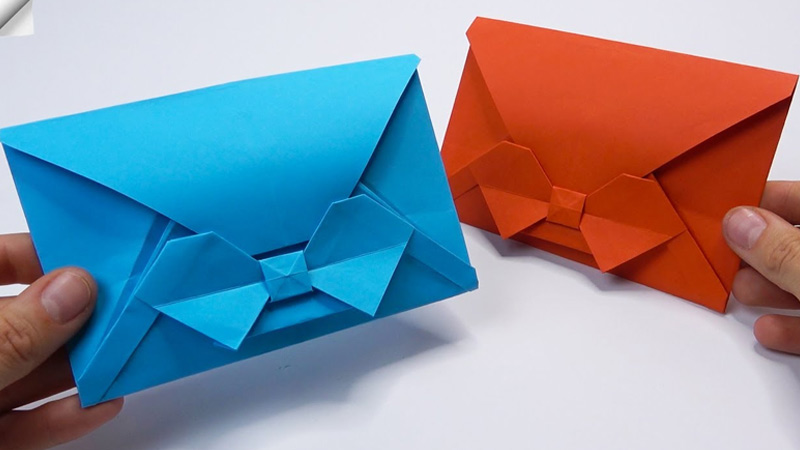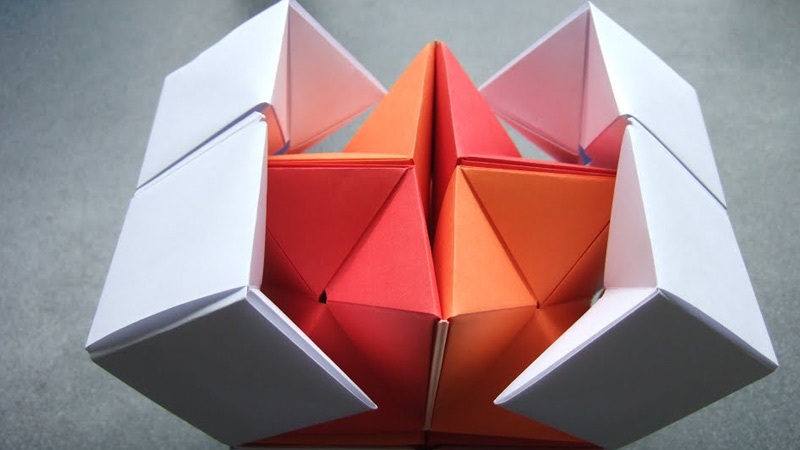Origami, the ancient Japanese art of paper folding, is a craft celebrated for its precision and elegance.
Yet, beneath the folds and creases lies a question that often puzzles enthusiasts: does origami paper bleed when it’s wet?
The answer is intricately intertwined with the very essence of this delicate art form. Origami paper, with its vibrant hues and intricate designs, is crafted to fold with grace and hold its form.
However, this paper’s absorbent nature, while ideal for color vibrancy and precision, raises concerns about its vulnerability to moisture.
In this exploration, we delve into the science behind origami paper, uncovering why it can bleed when wet, and discovering the implications for this beloved craft.

Does Origami Paper Bleed When It’s Wet?
Origami paper can bleed when it’s wet due to its highly absorbent fibers, which readily soak up water.
The water can cause colors to disperse and bleed, potentially compromising the precision and appearance of origami creations.
Origami paper is typically not designed to be water-resistant, and many types of origami paper will indeed bleed or show signs of damage when they come into contact with water.
The extent to which the paper bleeds or deteriorates depends on these factors:
Paper Quality
The quality of origami paper plays a crucial role in how it reacts to moisture. High-quality origami paper is carefully manufactured to maintain its structural integrity when exposed to water.
These papers are less likely to tear, bleed, or warp. Conversely, lower-quality paper is more susceptible to water damage due to inferior materials and construction.
Type of Paper
Origami paper can be made from various materials, each with its own response to moisture. Wood pulp paper, a common choice, tends to weaken and tear when wet.
Traditional Japanese washi paper, made from mulberry fibers, is known for its durability and ability to withstand moisture.
Specialty papers like foil or tissue can react differently; foil paper may repel water, while tissue paper is highly absorbent.
Color and Dye
The coloration of origami paper can influence its response to water. Papers with lighter colors or less intense dyes typically bleed less when exposed to moisture.
The dye in these papers is more stable and less prone to running or transferring onto other surfaces.
In contrast, papers with darker or heavily saturated colors may bleed more when wet due to excess dye dissolution.
Thickness
The thickness of origami paper impacts its resistance to moisture. Thicker paper generally maintains its shape and strength better when exposed to damp conditions. However, extremely thick paper may still be affected by prolonged water exposure.
Folding Technique
The way you fold the paper can affect its reaction to water. Neat, precise folds with well-defined creases create fewer opportunities for water to penetrate the paper’s surface, minimizing potential damage.
Conversely, complex origami models with multiple layers and intricate folds can create more creases and edges where water can seep in, potentially causing weakening or warping.
How to Prevent Origami Paper From Bleeding When It’s Wet?

Preventing origami paper from bleeding when it gets wet is essential to preserve the quality of your origami creations.
Here are some effective tips to help you avoid bleeding:
Choose High-Quality Origami Paper
Opt for origami paper from reputable brands known for their color-fastness and resistance to bleeding. High-quality paper is less likely to bleed when exposed to moisture.
Use Water-Resistant Paper
Consider using specialized water-resistant origami paper designed to withstand contact with water without bleeding. These papers are ideal for projects where moisture resistance is crucial.
Avoid Wet Folding
Wet folding is a technique where you dampen the paper before folding it to create organic, curved shapes. If bleeding is a concern, avoid wet folding and opt for dry-folding techniques.
Store Origami Creations Properly
Keep your origami creations in a dry, controlled environment. Exposure to high humidity can increase the risk of bleeding. Use airtight containers or display cases to protect your origami from moisture.
Test a Small Piece
Before starting a complex origami project, especially one involving wet-folding techniques, test a small piece of paper to see how it reacts to water. This will give you an idea of its susceptibility to bleeding.
Limit Exposure to Moisture
While working on your origami, be cautious not to spill liquids or expose the paper to moisture accidentally. Keep drinks and water sources away from your workspace.
Use a Dry Folding Bone
When folding the paper, use a dry folding bone or tool to create crisp creases. Avoid using a wet tool, as this can introduce moisture into the paper, increasing the risk of bleeding.
Apply Light Pressure
When folding, use gentle and even pressure to avoid saturating the paper with moisture from your fingers or tools.
Dry Gently if Paper Gets Damp
If the paper becomes slightly damp during the folding process, pat it dry gently with a clean, lint-free cloth. Avoid rubbing, as this can damage the paper fibers.
Consider Alternative Materials
If you’re concerned about bleeding, explore alternative materials like plastic or fabric for wet-folding projects. These materials don’t have the same bleeding issues as paper.
Disadvantages of Origami

Origami is a beautiful and intricate art form with numerous advantages, but it also comes with its own set of disadvantages.
Here are some of the common disadvantages associated with origami:
Time-Consuming
Origami can be a time-consuming activity, especially for complex designs. Folding intricate models can take hours or even days, which may not be suitable for people looking for quick crafting projects.
Requires Patience and Precision
Origami demands a high level of patience and precision. Mistakes can be frustrating, and achieving perfection can be challenging, especially for beginners.
Limited to Paper
Traditionally, origami is primarily done with paper. While this constraint is essential to the art form’s purity, it limits the variety of materials and textures that can be used for creative expression.
Not Water-Resistant
As mentioned earlier, origami paper is not water-resistant and can easily bleed or lose its shape when exposed to moisture. This limits where and how you can display or use origami creations.
Fragile
Origami models are delicate and can be easily damaged. They are not suitable for high-impact or long-term use. Over time, even well-preserved origami creations may become worn or creased.
Complex Instructions
Some origami designs come with intricate folding instructions that can be challenging to follow, especially for beginners. This can be discouraging for those new to the art.
Resource Intensive
Creating complex origami models can consume a significant amount of paper, which may not be environmentally sustainable, especially when using specialized origami paper.
Limited Functional Value
Many origami creations are primarily decorative and may not have practical uses. This limits the utility of origami beyond being an artistic pursuit or a decorative element.
Skill-Dependent
Achieving advanced origami designs requires a high level of skill and practice. Novices may find it discouraging to create intricate models initially.
Limited Artistic Freedom
Origami often adheres to specific folding rules and traditions, which can restrict artistic freedom. Deviating from these rules can sometimes result in a loss of recognizability as origami.
FAQS
What is an origami envelope?
An origami envelope is a folded paper creation that serves as a decorative or functional container, typically crafted through the art of paper folding.
What is “paper envelope origami”?
“Paper envelope origami” refers to the practice of creating envelopes using origami techniques.
What is “wet folding origami”?
Wet folding origami is a technique where artists dampen the paper before folding it.
Can I use tissue paper that bleeds when wet for origami?
Tissue paper that bleeds when wet is generally not recommended for origami, as it can lead to color bleeding and distortion of the paper’s appearance.
Can you fix the bleeding in origami paper once it has occurred?
Unfortunately, once origami paper has bled, it is challenging to reverse the damage. Prevention is key to maintaining the integrity of your origami creations.
To Recap
The question of whether origami paper bleeds when it’s wet sheds light on the intriguing balance between the absorbent qualities of this specialized paper and the meticulous art of paper folding.
Origami, celebrated for its precision and aesthetic allure, relies on paper’s ability to hold form and color vibrancy.
However, the absorbency that enhances these aspects also renders it susceptible to moisture-induced bleeding.
While this phenomenon presents challenges, especially in wet-folding techniques, it simultaneously offers opportunities for artistic expression, pushing the boundaries of traditional origami.
Ultimately, understanding how origami paper reacts to water equips enthusiasts to make informed choices, explore new techniques, and embark on a journey of creativity and mastery in this timeless craft.
Leave a Reply